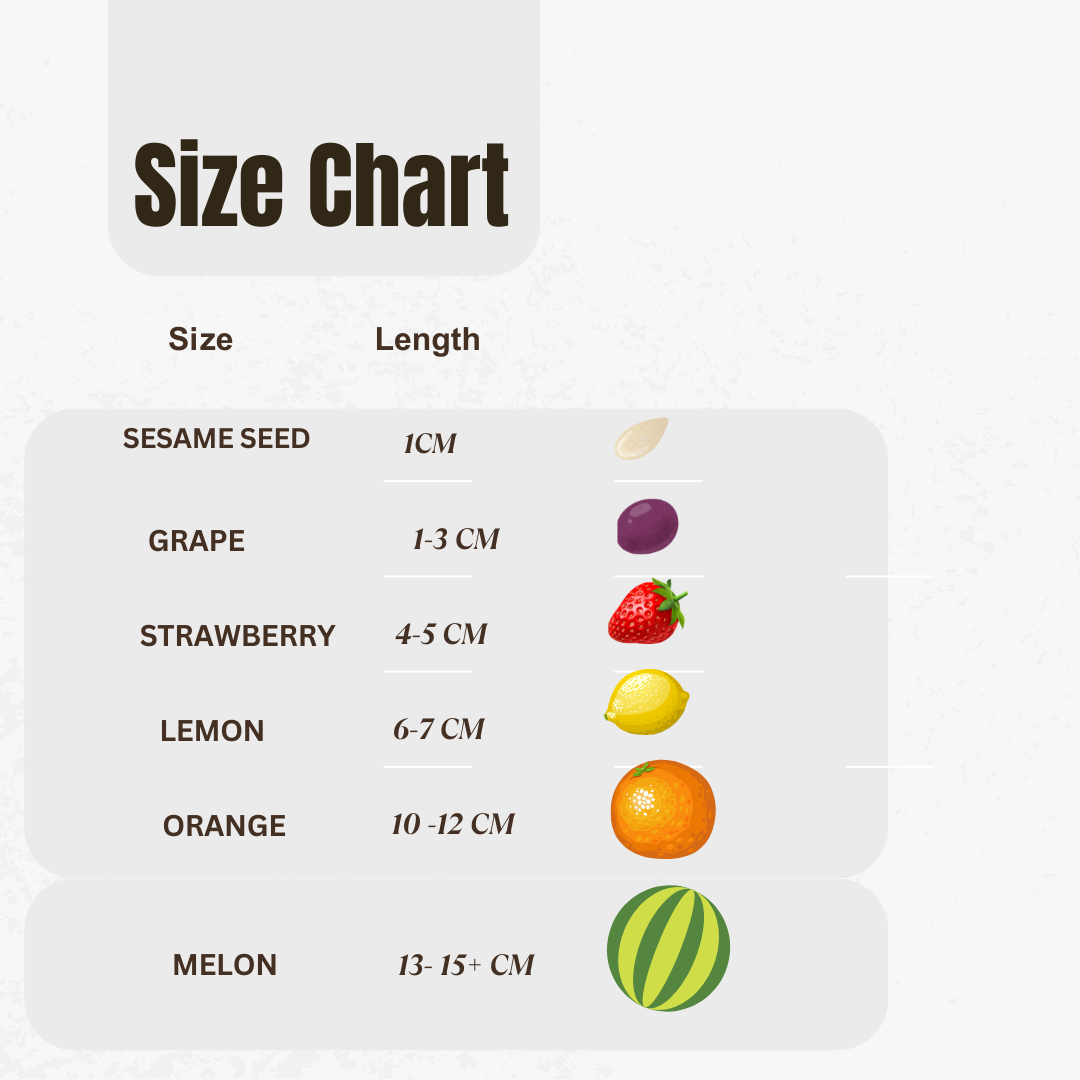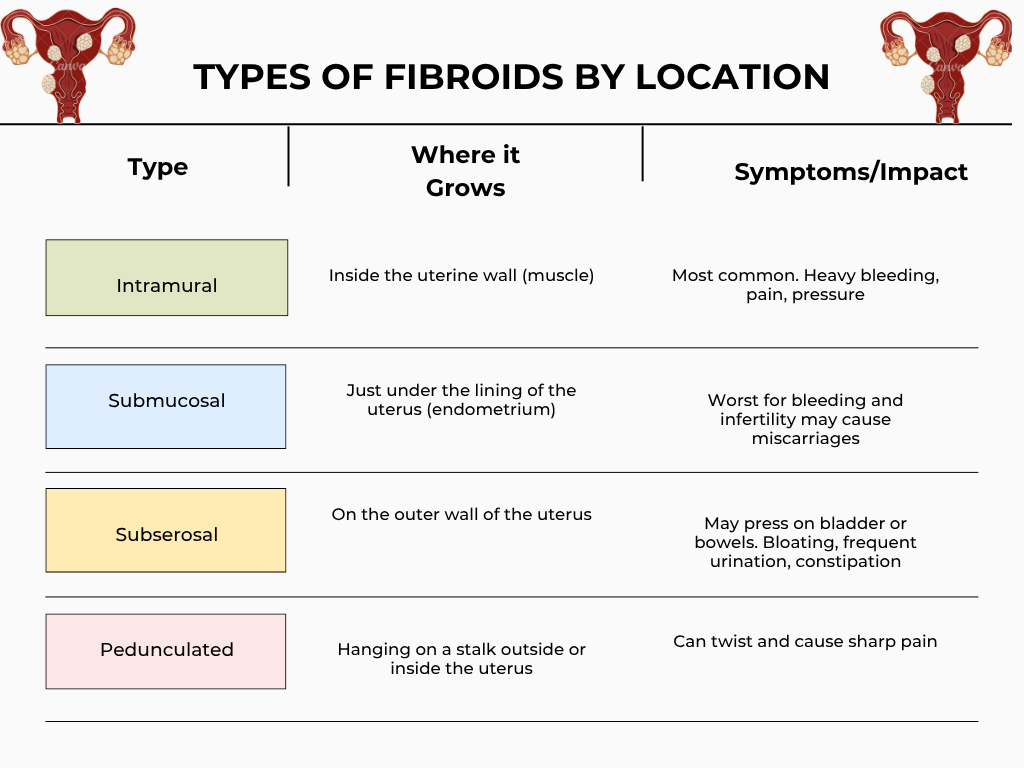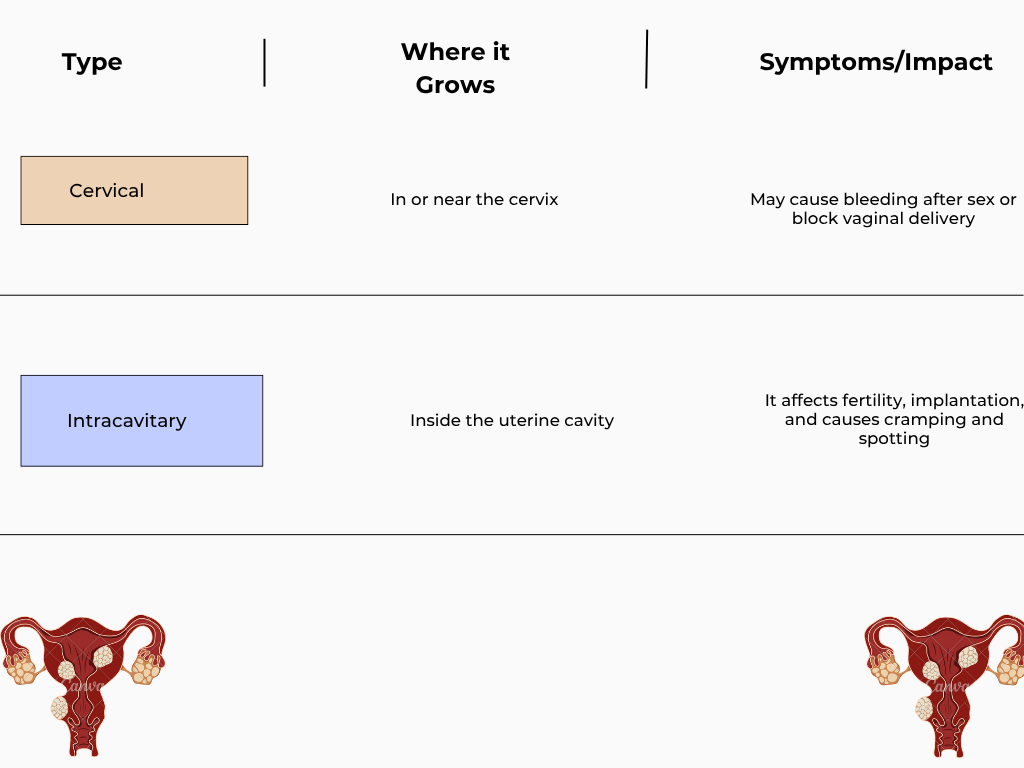
Intro
Fibroids are benign growths that are found in the uterus. They are most common in women between the ages of 25 to 50 and black women. Fibroids affect up to 80% of women during their lifetime. I’ve personally experienced fibroids (you can read my story [here]) and I had to undergo a myomectomy to remove them. In this post, I will explore what causes fibroids, symptoms, treatment options, and my thoughts on what needs to change in women’s healthcare. If you are dealing with fibroids, know that I do understand fully what you are going through and I hope this post gives you clarity and support.
What Causes Fibroids?
The exact issue is still unknown, but research and medical evidence show that hormones, genes, and lifestyle play a significant role. Let’s explore all these factors one by one.
Hormonal Imbalance
If your hormones are imbalanced (I have discussed this link here), the estrogen level is high relative to progesterone, causing estrogen dominance. This usually occurs when the liver isn’t detoxing estrogen well, high body fat and exposure to synthetic estrogens (These are manmade substances that mimic estrogen). These synthetic estrogens are in phthalates and other chemicals like BPA. They are usually found in plastics, cosmetic products, pesticides and herbicides, flame retardants, dioxins, and heavy metals(present in furniture, electronics, industrial waste, and polluted water).
Progesterone
If progesterone hormone levels are high, they promote and enlarge the fibroids. This happens when the fibroids are already present in the uterus. In other words, it acts like fertilizer.
Vitamin D Deficiency
Lack of vitamin D is also linked to fibroid development because it helps regulate cell growth and reduce inflammation. Studies show women with low vitamin D levels are more likely to develop fibroids. This deficiency is common in Black women due to melanin reducing vitamin D production from sunlight.
Genetic Links
Do women in your family have it? Then the likelihood of you having it is high, and certain genetic mutations can lead to faster fibroid growth.
Lifestyle Factors and Environmental Exposure
How you eat and workout. If it’s unhealthy you are prone to get it and promote their growth. For a healthy lifestyle, I have tips in these posts here on diet and workout.
Common Symptoms of Fibroids
Symptoms of fibroids are usually heavy painful periods with clots, irregular periods , bloating, constipation, pelvic pressure, frequent urination, pain during sex, spotting during periods, and a pregnant belly when you haven’t conceived. If you experience these symptoms, please book an appointment with your gynecologist who will do a scan and confirm the presence of fibroids.
Diagnosed With Fibroids – What Next?
Things you need to consider are the size, number (that is, how many are they), location, and impact. Where the fibroids are located affects your uterus, other organs, and symptoms. Check below size chart and location table to understand deeper.



Treatment Options Available
A gynecologist will likely recommend a myomectomy, which is fibroid removal surgery if you have large multiple fibroids. If this is the case, don’t be scared because this is a healing option too. . As much as you might think it’s extreme, it’s all about improving your health. It is important to note even after the myomectomy the fibroids can recur. The other way is the UFE (Uterine Fibroid Embolization). This is non-surgical and less invasive way for shrinking them. What is done is that a radiologist blocks blood flow to fibroids and a warning is that it may not be ideal if you want to get pregnant.
Another treatment option is hormonal therapy where you can be put on birth control depending on which hormone is high, estrogen or progesterone. So, the aim of this is to shrink the sizes of fibroids. It’s not a permanent solution. You can also opt for natural supplements that can help balance the hormones( I have an upcoming post about this soon). Hormonal supplements should be taken according to dosage prescribed by a qualified medical practitioner. Do not self-prescribe. The medical practitioner can for example be a functional doctor. The supplements shrink the size and reduce inflammation and it’s not permanent.
Examples of Hormonal Supplements That Can Help
- Chasteberry (Vitex)
Balances estrogen and supports natural progesterone production. Helps with heavy periods, PMS, and fibroid-related hormonal imbalance.
- DIM (Diindolylmethane)
Aids the liver in breaking down excess estrogen. Supports healthy estrogen metabolism to slow fibroid growth.
- Milk Thistle (Silymarin)
Strengthens liver detox pathways. Helps your body clear out hormonal buildup and inflammation.
- Inositol (Myoinositol + D-Chiro)
Balances insulin and blood sugar. Supports hormonal balance especially if you also have PCOS or weight gain.
- Ashwagandha
Reduces cortisol and stress-related hormonal imbalances. Supports adrenal health and restores hormonal rhythm.
- Kanchanara Guggulu
An Ayurvedic formula known for shrinking fibroids, cysts, and glandular swelling. Supports lymphatic drainage, thyroid function, and uterine health.
- Vitamin D3
Helps regulate cell growth and supports immune function. Deficiency in vitamin D is linked to a higher risk of fibroid development. Supplementing can support hormone balance and reduce inflammation.
Healthy Lifestyle and Reducing Exposure
Another thing you can do to shrink the size is adopt a healthy lifestyle. This includes a healthy diet you can find more info here , working out find more here, and reducing exposure to synthetic estrogens. Use BPA-free plastics or glass products. Avoid using cosmetic products or processed foods. Basically, when you buy any product, check the ingredients and if you see many chemicals you don’t understand, opt for another. The less ingredients the better. Also, opt for natural soaps, shampoos, lotions, and oils. Stress management is also key. Sleep well, avoid toxicity in any area of your life. If your mental health is not good, seek help.
What About a Permanent Solution?
If you are reading all this and you’re like okay, can we just have a permanent solution and for now the one that is available is hysterectomy. Complete removal of the uterus. In my opinion, this is extreme and also I do feel like the medicine field fails women in research and solutions because as you have seen the causes are hormones in our body that cause and promote growth, yet with research and years of this condition affecting a lot of Black women, the only solution the medical team has is to remove the uterus. I do believe this can even harm your body.
Other gynecologists go as far as advising you to get babies then hysterectomy and believe that the condition occurs because you refuse to get children and dare, I say the most who hold this belief are ahem men. So, what if a lady decides to be child-free or not ready to be a mother? Are you going to force her to have babies which comes with their own risks? Because pregnancy is a high-risk condition to the body. You can get even high blood pressure or lose your life. So how can this be a solution? The medicine field needs to do right by women to get better solutions for us because all these treatment plans come with high risk and not a cure. In an upcoming post I will share the gaps that exist in medicine for women who experience hormonal and uterine conditions.
Final Thoughts
Living with fibroids is tough. The symptoms are real and can affect your daily life, and the treatment choices are not always clear or fair. But understanding your body and your options is a powerful first step. I hope this post gives you clarity and the strength to keep asking questions and choosing what’s best for you.


